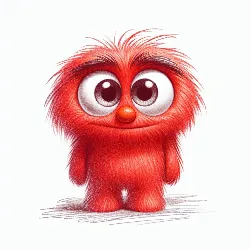
Level 1:
Do you remember Tickle Me Elmo? It was a toy that everyone wanted in the mid-90s. It was red, soft, and laughed when you tickled it. But today, some kids don’t even know about it.
Tickle Me Elmo was popular at first because it was fun. But, the craze didn’t last. People stopped buying it after a while. Why? Because they got bored of it. The toy didn’t have many things to do with, and the same laughter became dull after some time.
So, shoppers started looking for other toys. Newer toys had more stuff to do with. They were more fun. Over time, people forgot about Tickle Me Elmo. Today, some remember it as a fun memory of the 90s.
Level 2:
Remember the iconic toy from the mid-90s, Tickle Me Elmo? The plush red Elmo doll that giggled uncontrollably when squeezed or tickled was a sensation that almost every kid wanted during its heyday. But have you ever wondered, despite its enormous popularity, why its popularity plummeted?
The popularity of Tickle Me Elmo could be attributed to its novelty and fun factor. However, the diminishing interest in the toy over time led to its downfall. One of the main reasons was its lack of engaging interactive features beyond the tickling action, which eventually became repetitive and predictable.
As new toys with more advanced features and interactivity hit the shelves, the loyal Elmo customers were tempted away. Gradually, Tickle Me Elmo went from being a must-have item to just another flash in the pan, and slowly faded into obscurity. While it might occupy a nostalgic corner in the minds of those who remember its glory days, its downfall serves as a reminder of the dynamic nature of consumer trends.
Full Story:
Tickle Me Elmo - the cute, giggling Elmo toy that created a retail frenzy in the mid-90s. The red, ticklish Muppet from Sesame Street was a sensation, selling out in stores faster than they could be stocked. But then, despite its mainstream success, the Tickle Me Elmo fell from grace. What caused the downfall of this once sought-after toy?
Its success was primarily owing to its novelty. It was one of the first toys that interacted back - a plush that responded with bouts of contagious laughter when tickled or hugged. This combined with the fame of the Elmo character from the beloved children’s show Sesame Street, made it an instant hit among both children and their parents.
However, as the novelty wore off, the affection for the toy began dwindling. One reason for this was its limited functionality - it could do one thing and one thing only: laugh. After a while, the laughter, which was once endearing, became mundane and the toy’s gimmick began to wear thin. The lack of additional features or modes of play limited its appeal over time.
A big blow came when the toy market started to evolve. With technology advancing rapidly, toys started becoming more interactive, sophisticated and offered a wider range of features. From toys that could talk, walk, dance to ones that could be programmed and operated through smartphones - the competition was getting fierce.
As a result, Tickle Me Elmo had to compete with toys that provided a much more extensive and immersive play experience. Consequently, its popularity started to wane and its sales decline. Consumers were drawn to newer toys that were not only more dynamic but also offered more value for money.
Many toy enthusiasts today, might still hold some fond memories of the Tickle Me Elmo craze. However, it serves as a lesson to other toy manufacturers about the fickle and ever-evolving nature of the market. It is a reminder of how important it is to invest in innovation and consistently deliver fresh, engaging experiences to attract and retain consumers.
All in all, the decline of Tickle Me Elmo stands as a perfect example of the rise and fall in the toy market - from unprecedented success to an almost forgotten piece of pop culture. Regardless, the laugh of Elmo will always be remembered in the hearts of those who experienced the 90s Tickle Me Elmo mania.
Questions:
What made Tickle Me Elmo popular in the mid-90s?
Why did the popularity of Tickle Me Elmo decline?
How has the toy market evolved over the years?
What lesson can other toy manufacturers learn from the decline of Tickle Me Elmo?
Fill In the Blanks:
Tickle, giggle, 90s, obscurity, toy, interactive, novelty, dwindling, evolve, dull The ________ Me Elmo was a hot ________ in the mid-_______, famous for its adorable ________ when tickled.
However, this much-loved ________ soon faded into ________.
The ________ of the toy and its lack of ________ features contributed to its popularity ________.
The toy market began to ________, introducing advanced toys that were not just toys but playmates, leaving the simple, tickling Elmo to become ________.
Difficult Words:
Tickle Me Elmo - a popular toy from the mid-90s that giggled when tickled
Novelty - the quality of being new, original, or unique
Dwindling - gradually decreasing in number or strength
Interactive - designed to respond to the actions, commands, etc. of a user
Giggle - laugh lightly in a nervous, silly or happy way
Obscurity - the state of being unknown or forgotten
Evolve - develop gradually, especially from a simple to a more complex form
Toy Market - the industry relating to the manufacturing and selling of toys
Dull - lacking interest or excitement, becoming boring over time
90s - the decade spanning from 1990 to 1999.




